Seven signs your ski holiday has been Americanised
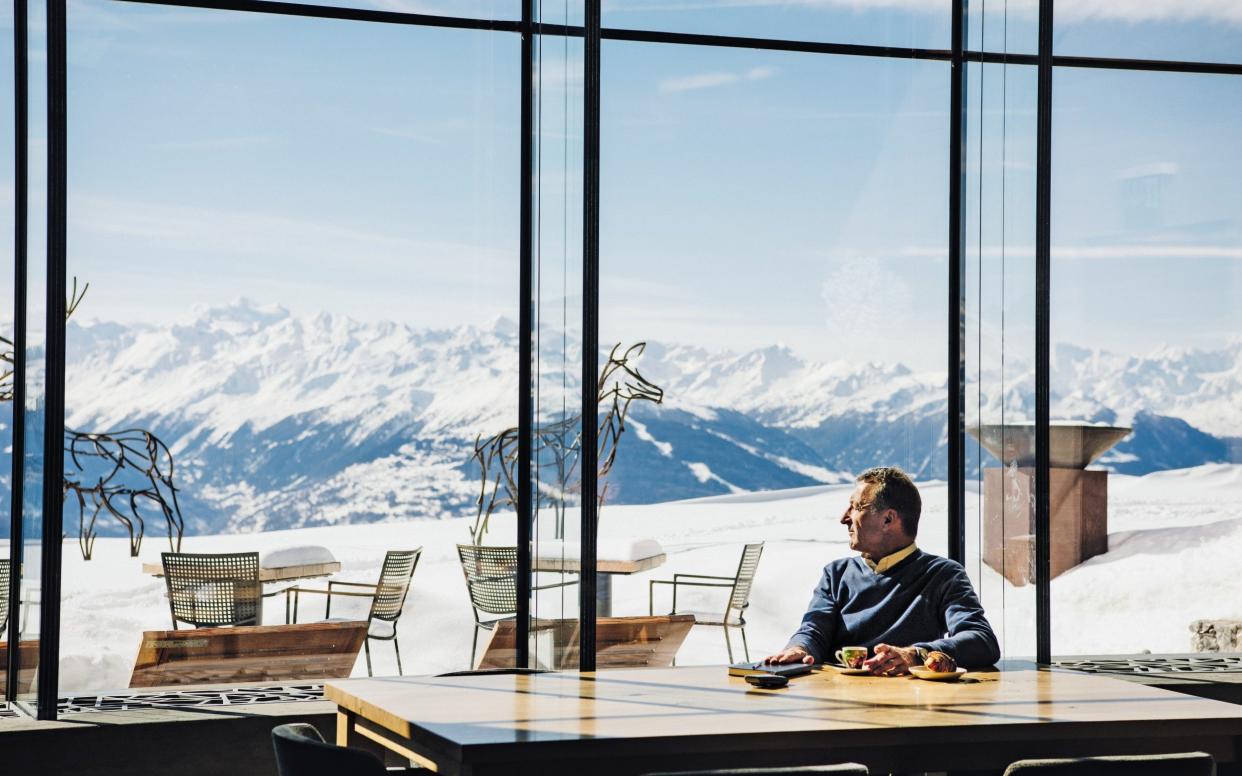
Will skiers in the Alps soon start swapping pichets for pitchers, or flipping burgers on the fourth of July, instead of sipping onion soup on the 14th? The recent announcement that US conglomerate Vail Resorts had bought the resort of Crans-Montana in Switzerland – its second European acquisition in the space of just two years – certainly indicated an impending Americanisation of the Alps, according to some.
On the popular forum SnowHeads, skiing enthusiasts reacted to the news by sharing fears about everything from a doubling of lift pass prices and ski schools being forced under resort ownership, to the entire culture of Alpine holidays undergoing a California-style facelift.
Vail Resorts now owns more than 40 ski resorts around the world, and offers access to more than 40 others through its Epic Pass. Along with the Ikon Pass, owned by Vail’s rival, the Alterra Mountain Company, these one-stop-shop season tickets have been blamed for creating an increasingly homogenised and soulless skiing experience. Critics also claim that the passes prioritise the needs of jet-setting city dwellers over locals, leading to price increases for day tickets, parking and accommodation.
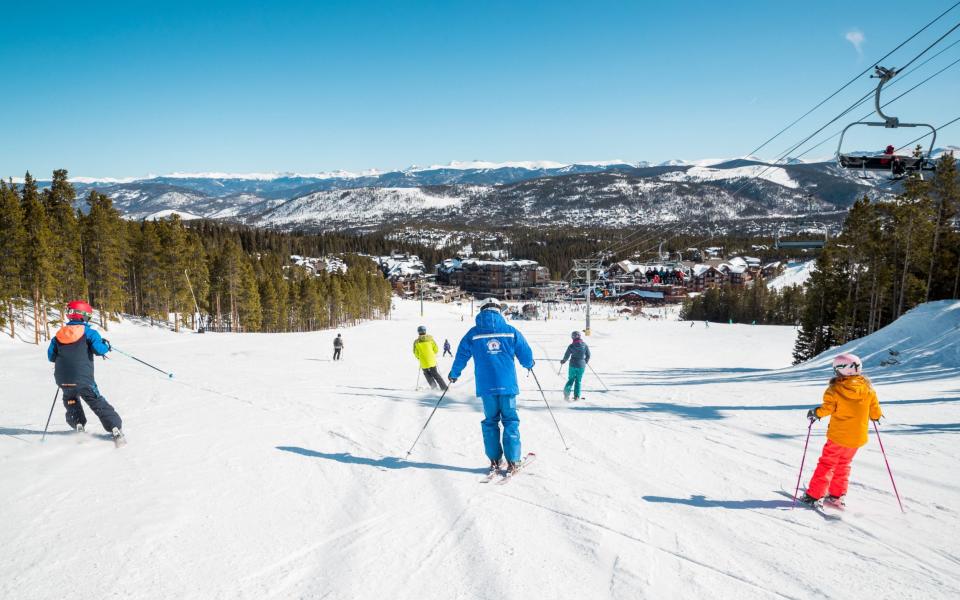
More than two million Epic Passes have been sold for this winter, according to director of corporate communications Jamie Alvarez and although Alterra doesn’t publish Ikon Pass sales figures, this duopoly – the winter sports equivalent of Coke and Pepsi some argue – now entirely dominates the US ski market. As Vail and Alterra expand into Europe, there are fears that the rivalry between the two companies – valued at $8 billion (£6bn) and an estimated $4 billion (£3bn) respectively – may spill across the Atlantic.
Starting in 2016, Epic has added several big-name European resorts to its list of destinations, including British favourites like the French Trois Vallées and Verbier in Switzerland. Ikon followed suit in 2019, and now counts Zermatt, Kitzbühel and Chamonix on its list of resorts. While neither company releases data on how many of their US-based customers take advantage of their European offerings, anecdotal evidence suggests that the number of American skiers travelling to Europe has increased in recent years. In April, Forbes published the “Five Best Reasons to Ski in Europe Next Season”. That same month, the US skier’s bible Powder Magazine, asked “Why Americans Are Flocking To Europe For Ski Trips Instead Of Out West?”
According to those in the know, however, fears that this influx will change anything are overblown. Currently, only around 2 per cent of Crans-Montana’s clientele come from the US, according to Bruno Huggler, the director of the local tourist office. “We have a thousand, or a couple of thousand a year,” he says. While he expects this figure to grow following the takeover and the resort’s addition to the Epic Pass next season, “even if you have an important increase, we will still be focused on our main market. A big majority, about 80 per cent, of our clients are Swiss.”
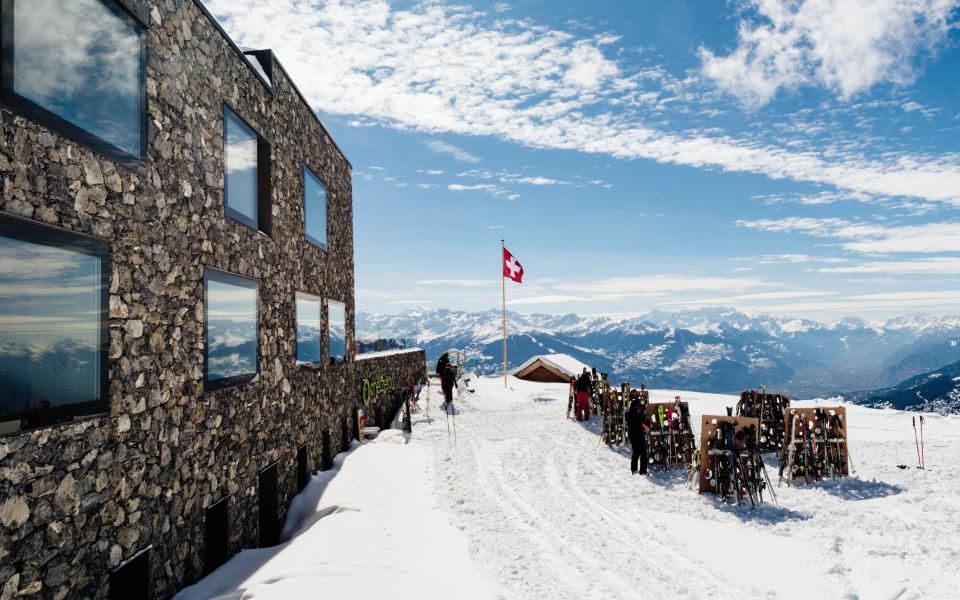
Price hikes are also highly unlikely, his colleague Pierre-Henri Mainetti explains, because unlike the US, the competition in Switzerland is usually just down the road. When it comes to culture, Huggler says, the resort, which grew out of a hotel founded in 1893, “has a 130-year-long history, so it will not change”. More to the point, he says, its American visitors wouldn’t want it to. “They don’t come to Europe to live like in America, just like I don’t go to the States expecting to discover Europe over there. They come to Europe because they want a different experience.”
Fears that European ski resorts might try to ape the North American business model, which often sees everything from accommodation to après bars, to ski rental shops owned by one company, also appear misplaced. In Alpe di Cimbra, a small resort in Italy’s Trentino region, what US visitors appreciate are the family-owned restaurants, according to Daniela Vecchiato, head of the local tourist office. The resort, which is included on the Epic Pass as part of the Skirama region, doesn’t get many holidaymakers from the States, but for the fifth season in a row, it’s serving as the European training base for the US Men’s Ski Team.
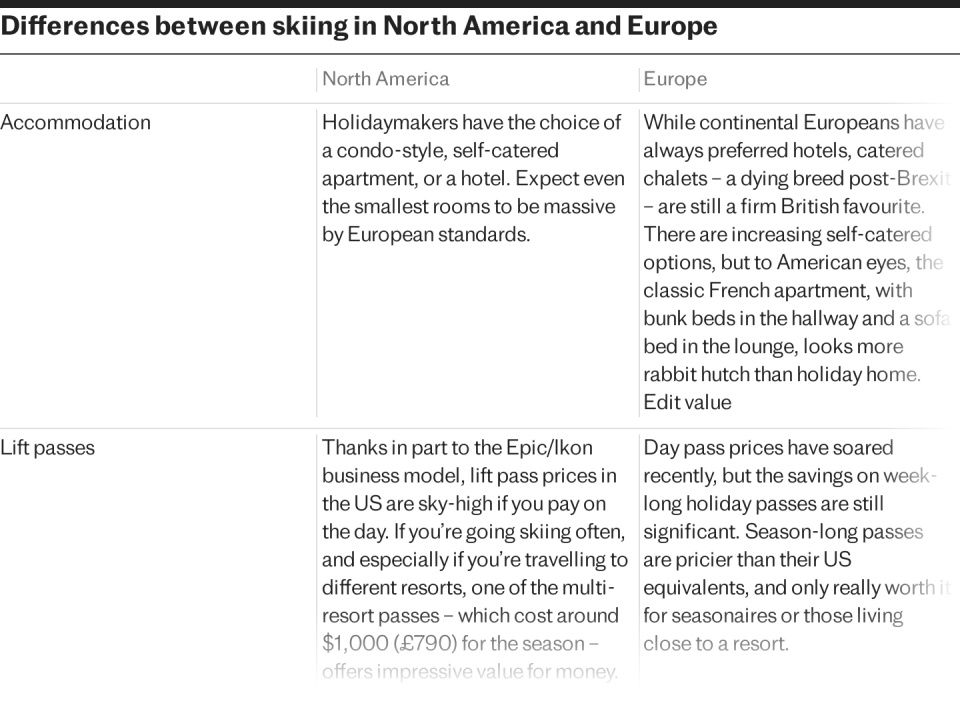
With athletes, coaches and staff included, there are often hundreds of Americans in the resort, and locals frequently see famous faces from squads carving down their slopes. “We’ve had visits from Mikaela Shiffrin and Lindsey Vonn,” she says. What the team appreciate is that “unlike the places I’ve been in Canada or America, where there are lots of people, here you can get to know the person behind the bar,” Vecchiato adds.
The European resort where the US influence is perhaps most obvious is Laax in Switzerland. Its world-class freestyle facilities, originally inspired by those in Mammoth, California, include multiple snowboard parks, an indoor foam pit, and two halfpipes. Next to these, Café No Name, modelled on a Californian surf shack, serves oat milk lattés and vegan food, as opposed to cheese fondue.
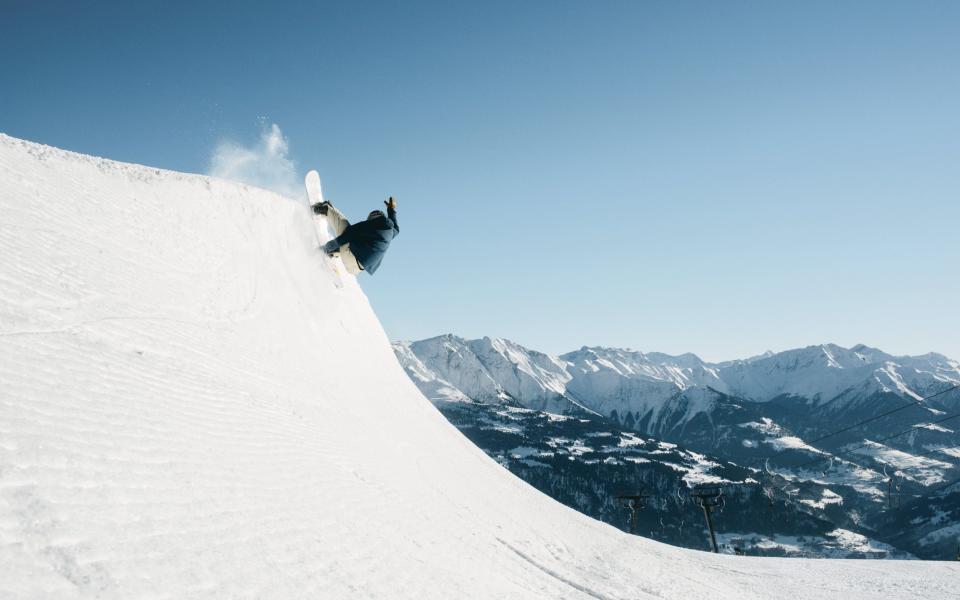
Down at the base station, Rocks Resort offers condo-style accommodation, and it, along with the neighbouring Riders and Signina Hotels, plus most of the bars and restaurants, are all owned by Laax’s Weisse Arena Gruppe (WAG) – making it arguably the most vertically integrated resort outside North America.
Any resemblance is entirely deliberate, explains Reto Poltera, who was instrumental in turning Laax into a freestyle powerhouse. The inspiration came originally from “Reto Gurtner, the owner of Laax, who was studying in San Francisco in the 70s,” he explains. When snowboarding crossed the pond from California in the 1970s, Laax bet big on it to set itself apart from the competition – hiring Poltera to build the first park in 1992, and investing ₣10 million (£9m) when it moved to its current location.
Ironically, given all the American influence, Laax is independent and isn’t included on either the Epic or the Ikon Pass. Despite the large sums it spends on the snowparks (it costs ₣2 million (£1.9m) to prepare them every season) Laax still “has to fight with every ski area with the prices”. Proof that even in this most American of Alpine ski resorts, costs are unlikely to be supersized any time soon.

